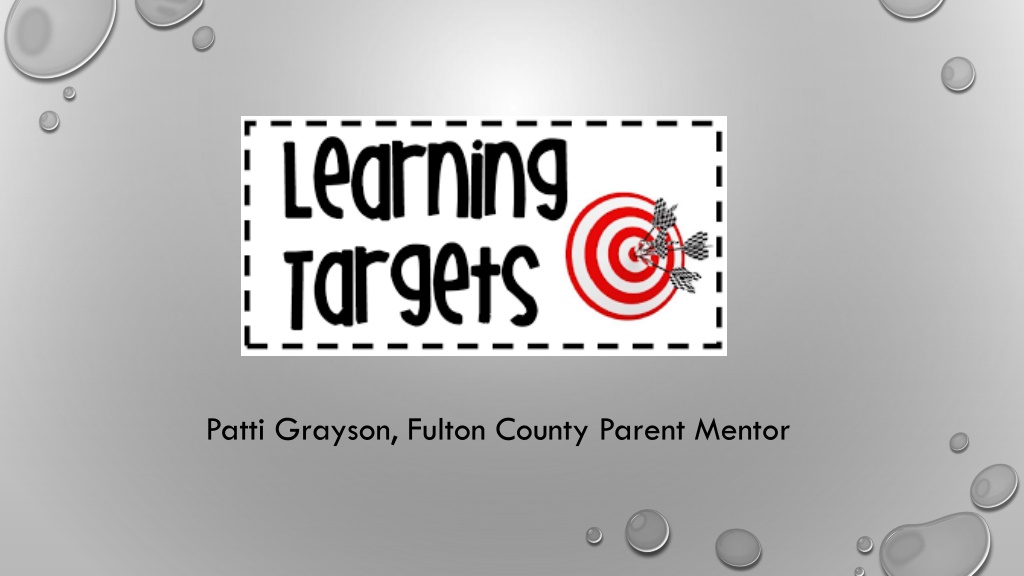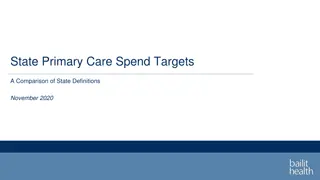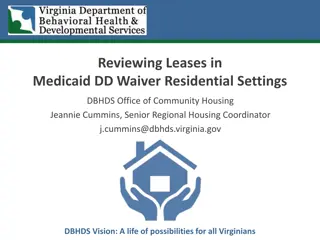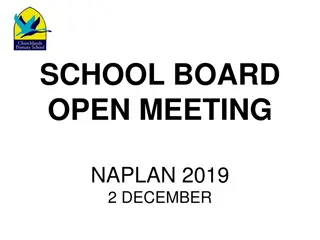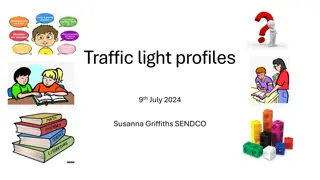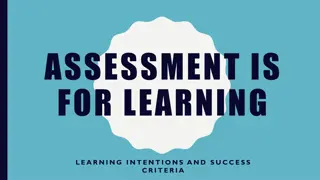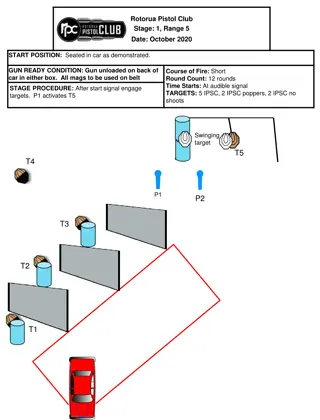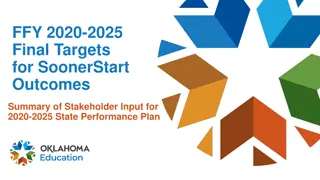Importance of Learning Targets in Educational Settings
Learning targets play a crucial role in guiding educational sessions by outlining what learners are expected to achieve and how they will demonstrate their learning. They help keep everyone focused, aid in data collection for target groups, and act like GPS directions for learning goals. Learning targets consist of two parts - learning intention and success criteria - to ensure clear objectives and assessment. These targets are written as observable "I can" statements and are essential for effective teaching and learning outcomes.
Download Presentation

Please find below an Image/Link to download the presentation.
The content on the website is provided AS IS for your information and personal use only. It may not be sold, licensed, or shared on other websites without obtaining consent from the author. Download presentation by click this link. If you encounter any issues during the download, it is possible that the publisher has removed the file from their server.
E N D
Presentation Transcript
The learning target for this session I can construct appropriately written learning targets that include both the learning intention and the success criteria.
Why do we need learning targets? They make a difference in adult learners They keep everyone focused They can assist us in keeping data for our target groups
Learning targets convey the destination of the lesson: what you want others to learn, how deeply to learn it, and exactly how they will demonstrate their new learning. Think of it as GPS step by step instructions of where you are, where you want to go, how long it will take you to reach your destination, points of interest along the way, and what to do when you make a wrong turn.
Learning targets are made of two parts 1. Learning intention 2. Success criteria
Learning Intention What it is I want the learner to learn
Success Criteria What the learner is going to do or how I am going to know the learner learned the material
Success criteria I can construct appropriately written learning targets that include both the learning intention and the success criteria. Learning intention
Learning targets are written as I can statements. I is the learner. I can define I can compare and contrast I can list and explain
Learning Targets Must be observable No I understand
How can we use learning targets in our work with Target groups? Learning targets can assist with Vital Behaviors
Using a Learning Target for a Vital Behavior during a Training Session with Parents Learning Target: I can identify two websites that will assist my child with meeting requirements necessary to graduate from high school. At the beginning of the training, ask parents to identify two websites they use to assist their child to reach his/her goal of graduation. Explore websites together during the training. At the end of the training, ask parents to identify two websites they felt were most useful for their family. Encourage parents to use those websites to complete the graduation timeline and to share that information with their IEP team (Vital Behavior).
Ultimately, using learning targets will enable us to keep accurate data. We can use this data to measure and quantify our growth and progress with fidelity.
Practice writing learning targets Select one of the Vital Behaviors on the next slide. Working together in pairs or small groups, write a learning target for that VB. Remember, learning targets are written as I can statements and they must be observable.
1. Family and student will use a graduation timeline as a guide to track individual activities identified as needing to be completed. 2. Family will plan and utilize a regular positive communication plan with their child s teachers. 3. Family and student will track ongoing conversations by using conversation starters or progress reporting to discuss attendance, behaviors, and academic needs of student.
Target Group Expectations Should include 10 20 members No less than 5 members Each member must complete a pre and post survey Learning Targets must be used Quarterly Reporting needs to be completed on time
Target Groups How do you find your Target Group?
FAMILY ENGAGEMENT BRIDGE Target Group Learning Targets Solutions Share & Replicate Quarterly Reporting Superstructure Family School Reporting Responsibilities Structure Professional Development Resources Foundation Toolkit
